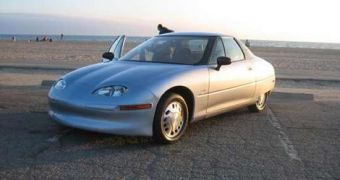A new method of building high-energy capacitors for storing electricity produced some amazing results. The new development can store up to seven times as much energy per unit volume than the old ones, with huge potential in various electrical engines and devices.
Capacitors are used in electrical circuits as energy-storage devices. They can store electric energy when disconnected from its charging circuit, so they can be used like a temporary battery, so they are commonly used in electronic devices to maintain power supply while batteries are being changed. (This prevents loss of information in volatile memory). They can also be used to differentiate between high-frequency and low-frequency signals and this makes them useful in electronic filters.
The new ones could dramatically improve the performances of many electrical applications, like the engines of hybrid and electric cars, which could achieve much greater acceleration, or in rockets and other spacecraft, where steering and braking could provide a better regeneration of electricity.
Vivek Ranjan led the team of researchers from the North Carolina State University, who made the discovery by using a polymer called PVDF, existing in both polarized and unpolarized forms, which acts like a high-performance dielectric.
The remarkable performances of the new material are due to its mostly frozen-in structure that varies only slightly when a capacitor is charged up. Entire regions of the new material can be forced to adopt this useful characteristic by mixing PDVF with a second polymer, called CTFE, making the entire material store and release unprecedented amounts of energy.
The physicists are even more optimistic about their creation, saying that further studies on a more ordered arrangement of the material inside the capacitor could increase its ability to store energy even above the current threshold. Further testing is required before this new material could enter production, concluded Ranjan.

 14 DAY TRIAL //
14 DAY TRIAL //